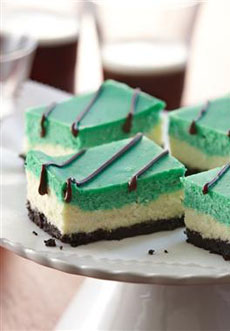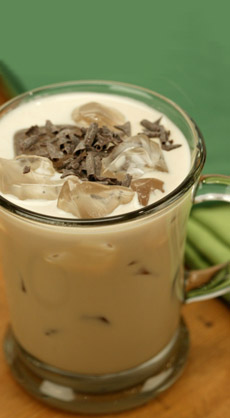|
Our Nana made stewed rhubarb every spring: as a dessert served plain, with whipped cream or ice cream. Then, there were rhubarb tarts and pies, including strawberry-rhubarb. Rhubarb, sometimes called “the pie plant,” makes exquisite desserts.
Since Nana stopped cooking, we rarely come across a rhubarb dish, even in locavore-based restaurants. We always see it in the store, and as time permits, make some stewed rhubarb.
But, says Kim Ode, rhubarb has a place in appetizers, breads, salads, side dishes, entrées and more.
She celebrates the vegetable in her new cookbook, Rhubarb Renaissance.
Ms. Ode has crafted some 50 sophisticated recipes, savory and sweet, showcasing the vegetable:* Rhubarb Corn Fritters, Turkey Tenderloins with RhubarBQ Sauce, Spiced Couscous with Rhubarb and Figs and Chop-Chop Sweet and Sour Stir-Fry are a few examples.
|
|

The new rhubarb cookbook, Rhubarb Renaissance. Photo courtesy Minnesota Historical Society Press. |
|
Updating Nana’s strawberry-rhubarb pie, Ms. Ode presents Salted Caramel Rhubapple Pie and Zucchini-Rhubarb Bread.
Nana would approve.
In the U.S., rhubarb is one of the first food plants to be harvested each spring; April/May is the peak season, and it grows until September (rhubarb from the Southern Hemisphere is available in October/November).
The new rhubarb cookbook is a great gift for people who like new and different ingredients—even though rhubarb has been cultivated for thousands of years in China, and grows wild on the banks of the Volga River in Russia.
In fact, the name “rhubarb” is a combination of the Ancient Latin rha, which referred to the Volga River, and barbarum, foreign; rha barbarum evolved to the Medieval Latin reubarbarum in the 15th century.
Take a bite of some rhubarb trivia.
*Yes, rhubarb is a vegetable. It looks like celery, but the two plants come from different botanical families. The difference between fruits and vegetables.
|







